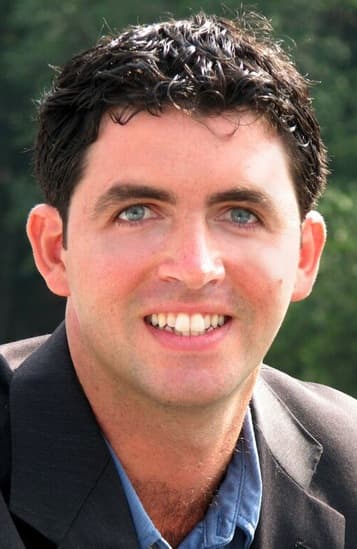Advertisement
Possible Key To Weight Loss? Researchers Find 'Master Switch' To Crank Up Fat-Burning
Here's my fantasy: I've overindulged — let's say, purely theoretically, on Cape Cod fried clams, french fries and beer — and would normally face the greasy regret and resign myself to extra carrots and cardio in the days to come.
But no. Instead, I simply pop a pill that cranks up my metabolism for a few hours so that I burn the extra calories instead of storing them as fat. I don't gain an ounce.
That's a very distant prospect. But new science on a "metabolic master switch," just out in the New England Journal of Medicine, brings my dream one step closer to reality — and, researchers say, may hold the promise of someday making a dent in the obesity epidemic.
Until now, weight-loss treatments have focused on altering appetite and exercise, says MIT computer science professor Manolis Kellis, senior author on the paper. Now, "what we have in our hands is a third knob, if you wish, for controlling body fat," he says. "It's working directly on your fat cells to reprogram them to burn more energy rather than to store it as fat."
In normal-weight mice, Kellis says, the effects of turning that knob are dramatic: "By changing the expression of one gene in these mice, they lose 50 percent of their body weight. You can feed them all the fat you want and they will not take on weight. They do not exercise more and they do not eat less, what they do is simply burn more energy when they're awake, or even in their sleep."

But mice are not men, of course. Could this work in humans?
“We experimented on human fat cells," says Melina Claussnitzer, first author of the paper, a visiting professor at MIT and faculty member at Beth Israel Deaconess Medical Center. "And we found that we could flip them from energy-storing to energy-burning by altering the expression of a single gene — and, even more remarkably, by altering a single letter from our 3-billion-letter genome. And we could flip that switch back in either direction.”
Still, it's a very long way from genetically editing human cells in a Petri dish to altering the metabolism of a breathing human, the researchers caution. The team has filed patents on their switch-flipping manipulations and are seeking to commercialize the approach and lead it into human clinical trials, Kellis says, but cannot speculate on a time frame.
So meanwhile, there's no such thing as a free fried clam. But we can at least savor the story of how this cutting-edge science came to be.
Advertisement
Let's begin in 2007, when researchers turned up the first genetic link to obesity, a region of the genome called FTO. To this day, it remains the strongest genome-obesity link: Some 44 percent of Europeans, it turns out, have a version that predisposes them to weigh more, on average five to seven pounds.
The natural next question was: How does it work? Does it make people eat more? Move less? Both?
Or neither, says Claussnitzer. "Despite seven years of intense efforts to hunt down a mechanism, no link has been made between the genetic differences in the region and altered functions in the brain.”
Rather, she says, FTO appears to affect the precursors of fat cells: "Our results indicate that the obesity-associated region acts primarily in adipocyte progenitor cells in a brain-independent way. When we lifted up the hood, we found a master control switchboard that works independently of the brain, and flips between storing energy as lipids versus burning energy as heat."
"Our story," Kellis says, "is that we shouldn't make assumptions about how something works until we've connected the dots between the genetic differences and the ultimate mechanism. In the end, connecting these dots uncovered a previously unknown metabolic master switch and this has major implications for how we can actually begin treating obesity."
It's Complicated
This has long been the promise of the Human Genome Project: that the genetic insights it yielded would lead to better understanding of biology and hence to treatments. But of course, life is always more complicated than you think.
The quest to understand the FTO region was particularly difficult because the genetic variants do not affect a protein, Kellis says; rather, they affect a "control region."
“Control switches are much harder to understand than the genes themselves,” Kellis says. “Imagine yourself in a dark factory with 20,000 machines, 2 million control switches and hundreds of factory workers, that makes thousands of different products. Genetics may suggest that a switch is broken, but you still need to find which one, and you need to trace its wires to the machines it controls, the products that are ultimately affected, the factory workers responsible for the switch, and also to understand the schedule of when that switch is normally flipped on or off.”
In obesity, the FTO genetic mutation doesn't affect the FTO protein, either directly or indirectly. Instead, Kellis says, it breaks a genetic switch, which can no longer be turned off, leading to the activation of two faraway genes more than a million letters away.
Those genes then instruct fat cell precursors to differentiate into fat-storing white fat cells instead of fat-burning beige fat cells, leading to more body fat.

Kellis and Claussnitzer see the New England Journal paper as a model for what's now possible with genomic research, they say. "Because this study has now connected all the dots," Kellis says. "From the region of association; to figuring out what the cell type is where that region acts; what is the driver nucleotide" — or bit of DNA — "that is responsible for the genetic signal; who is the upstream regulator — the finger that flips the switch; what nucleotide has broken the switch; who are the lightbulbs that turn on when you flip that switch; and what are all the intermediate processes that are the consequences of flipping that switch."
Lots of dots, combining into an impressive picture. Kellis believes the treatments that eventually emerge from it could help people regardless of their genetic makeup.
"There's a huge environment component" to the obesity epidemic," he says, "but perhaps by flipping that switch in people of both risk and non-risk genotype, we could help solve the obesity equation."
Obesity Experts: 'Tour-De-Force' Science But No Quick Pill
This is "wow science," says Dr. Caroline Apovian, director of the Center for Nutrition and Weight Management at Boston Medical Center. At the same time, "This is not going to turn into a new obesity drug tomorrow."
So what might she tell a patient who comes in asking about this new study?
"I would tell them to go out and exercise like crazy," she says.
The New England Journal study may add still more impetus to exercise, because earlier research suggests that exercise may help turn white fat into brown or beige fat, Apovian says.
Similarly, Dr. Sam Klein, director of the Center for Human Nutrition at Washington University School of Medicine in St. Louis, calls the new paper "a scientific tour de force." He, too, focused on new insights into brown fat.
The study found, he says, that the weight-promoting FTO mutations “result in more fat cells being white fat cells, which store fat, versus beige fat cells, which burn energy and burn up fat.”
“So this tells us that having more brown or beige fat might be an important regulator in body weight, which has never really been shown before in humans." And it naturally suggests a possible target for treatment, Klein says: “By trying to make more beige and brown fat cells in people, you may be able to help regulate body weight and obesity.”
Let’s hope. But obesity research is littered with attempts to get around the the tight control systems our bodies evolved to hang on to weight when times are lean. Past drugs aimed at ramping up energy expenditure have turned out to be toxic, Apovian noted.
Obesity is such a complex disease, Klein says, involving everything from brain to gut to environment, that “there won’t be any one single magic gene or magic bullet that will address this problem.”
